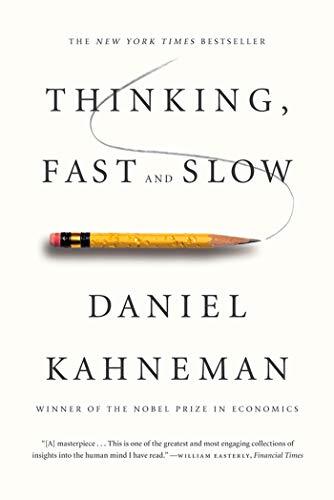
A wonderful read that gives a peek into the way people think and make decisions.
The book describes the two ways the mind can work:
- System 1: Reacts automatically, quickly, and with no control (e.g. reading text, solving 2+2).
- System 2: Slower, more methodical, and requires effort (e.g. solving a logic puzzle, calculating 27*34).
We assume that we make most decisions via system 2, but the reality is that we’re all lazy, and rely on system 1 far more often. This isn’t always bad—system 1 usually does just fine—but there are many cases where we can go astray.
These include heuristics and biases that everyone should be aware of:
- Anchoring effects
- Availability bias
- Substitution
- Loss aversion
- Framing
- Sunk cost fallacy
Quotes
Some great quotes:
A reliable way of making people believe in falsehoods is frequent repetition, because familiarity is not easily distinguished from truth.
This is the essence of intuitive heuristics: when faced with a difficult question, we often answer an easier one instead, usually without noticing the substitution.
Odd as it may seem, I am my remembering self, and the experiencing self, who does my living, is like a stranger to me.
We marvel at the story of the firefighter who has a sudden urge to escape a burning house just before it collapses, because the firefighter knows the danger intuitively, “without knowing how he knows.” However, we also do not know how we immediately know that a person we see as we enter a room is our friend Peter.
we can be blind to the obvious, and we are also blind to our blindness.
